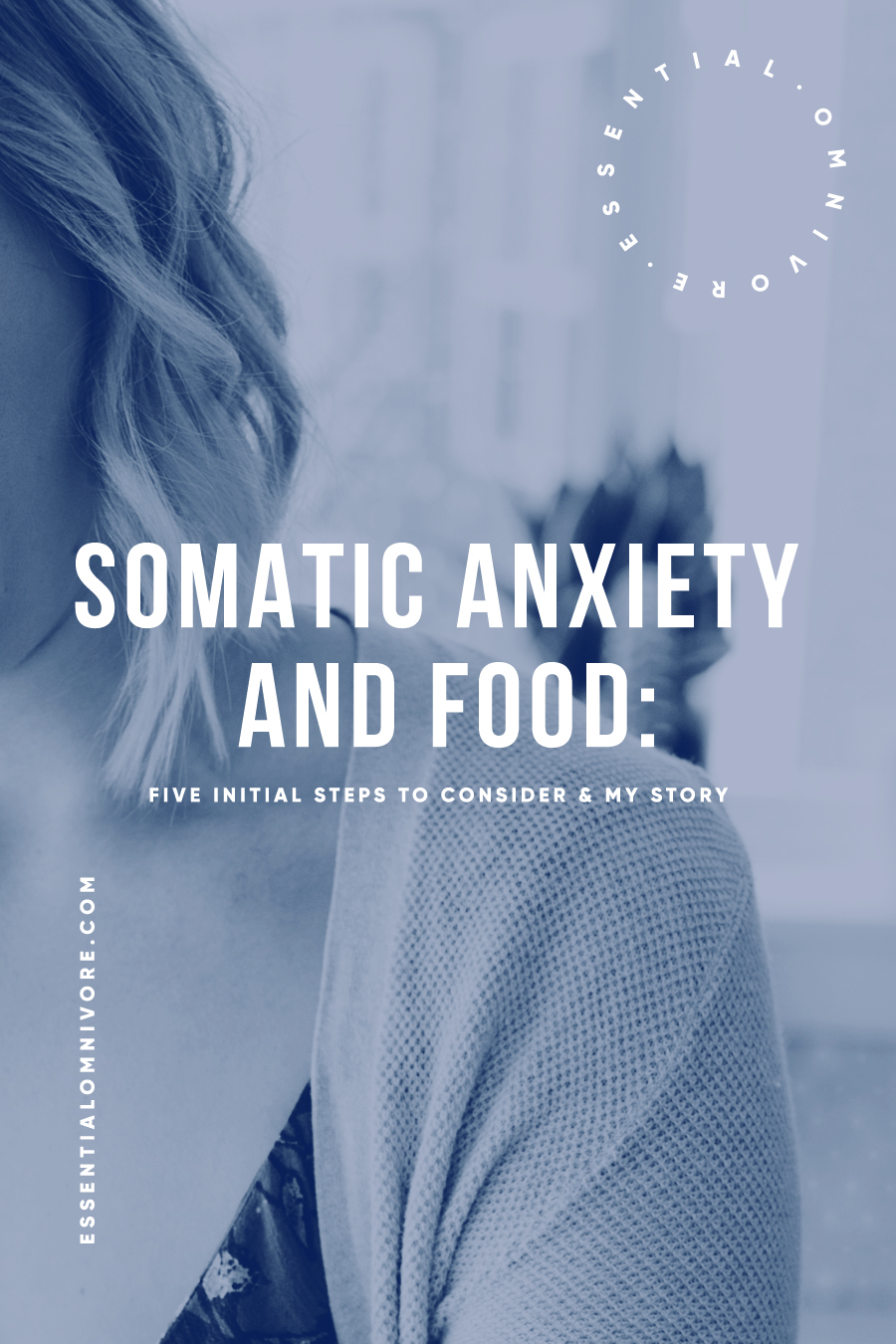
Read Part II of the Anxiety and Food series here.
Read Part III of the Anxiety and Food series here.
What does food have to do with it?
One of the biggest reliefs I’ve felt from anxious feelings, aside from physical movement and talking about those feelings, is understanding the role certain foods play in my body. This knowledge was so empowering to me that when I first went gluten-free, I knew I had to continue the conversation around food and how, in my experience, knowing how foods work in our bodies is a foundational piece of wellness to address when that wellness feels, well, a bit off!
Now that it’s 2018, I’ll have been gluten-free for exactly 10 years come this September! Going gluten-free absolutely changed my life for the better. While I love talking about gut health, and going gluten-free definitely affects the gut (this whole entire blog is 100% gluten-free, all the time!), the primary reasons for first going gluten-free in 2008 for me were psychological.
Here’s some personal background. Remember… we’re all unique! So what has helped me create movement around my wellness may not be the path, or even near the path, of what will work best for you. But like my intention with the Essential Omnivore podcast, I do believe that sharing stories creates healing, and well… I guess I have a story, too!
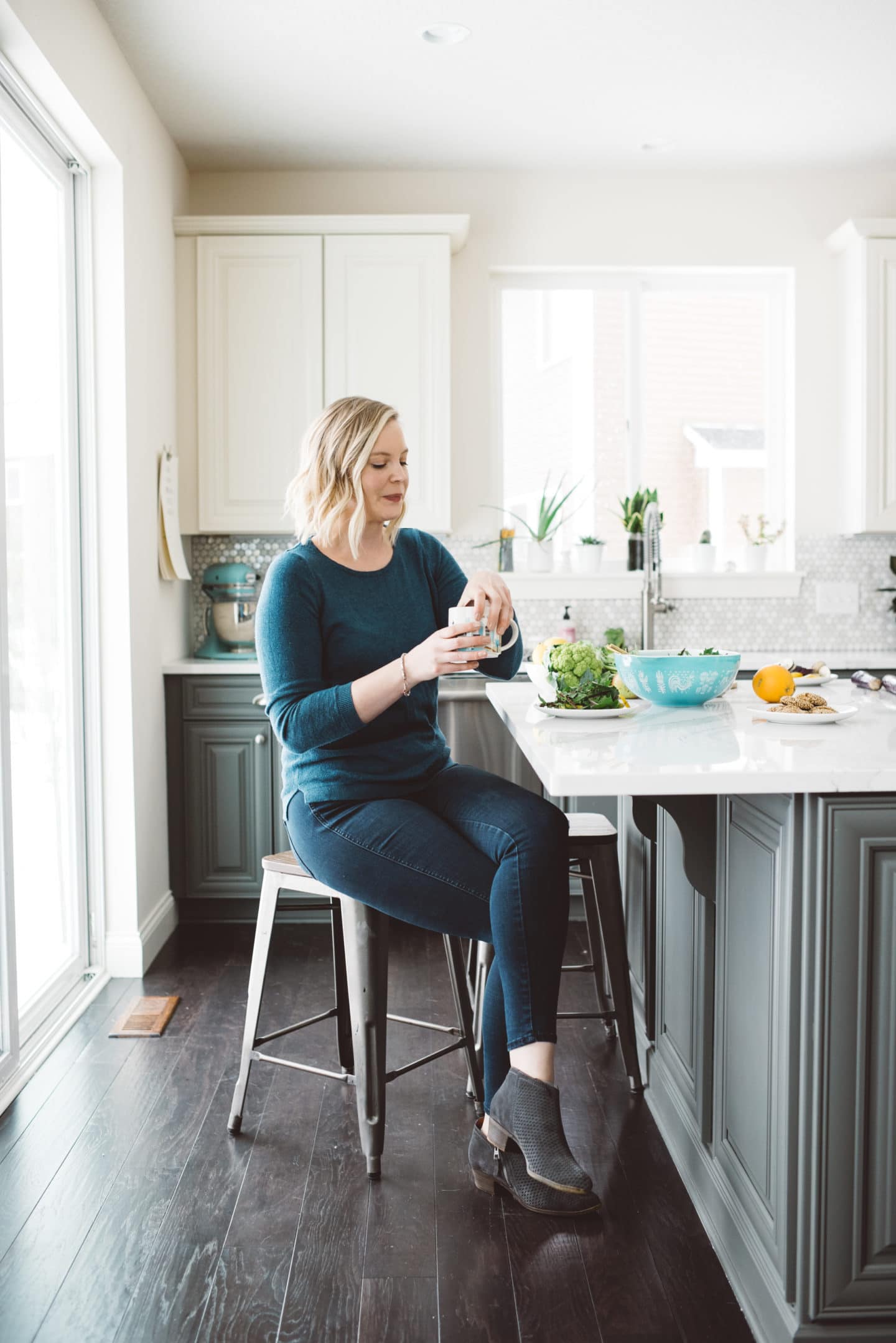
Lucia’s story
In 2008, I was going to college for my undergrad degree in Psychology. During the spring of 2008, I ended up moving back in with my parents during this second year of classes because I was just too stressed out. I was taking a full load and a half of classes and was working in a research lab part time. It was a busy schedule, but I knew I was very lucky in that I didn’t need a job outside of school while living on campus, so I figured I could just take more classes and be smart with my time (can’t wait to write a blog post about having a Type A personality and how that ties into autoimmune expression!). I was a good student, but never loved the school schedule, so I was eager to power through and graduate early!
In March of 2008, I felt totally overwhelmed and had the great luck of my parents living in the same town, so I moved back in with them. While going back to my family home helped alleviate some of the anxiousness and overwhelm I felt, as 2008 progressed I started to notice more symptoms of anxiety than I had ever had in the past. I’m a pretty shy individual, and so being shy was like, a good and fine and pretty typical baseline for me in general. However, that shyness always melted away at some point with people, and then I was free to be my goofball self! This new level of anxiety worried me (ironic and pretty normal for people who… struggle with anxiousness…) because it was markedly different than shyness.
What started happening during the summer of 2008 really started to feel different than shyness. I started to experience:
- Panic attacks (after seemingly minor stressors, like driving home from our family cabin)
- Blushing 24/7 (I’d even blush while doing my homework. By myself. In my room.)
- Fretting (I’d start to ruminate on silly or very old memories that I found embarrassing.)
- Dermographism (while not a psychological symptom, I’d begin to have hives and welts from gentle pressure applied to my skin, like a branch brushing against my forearm, or kneeling in the dirt while gardening)
- Foggy brain (and I mean, like, a completely opaque fog. Schoolwork started to take hours upon hours to get done, and I had no clue why work that had once been doable suddenly became this exhausting and difficult task)
For those who know what a panic attack is like, all I can say is–they suck! After the experiences started to pile up that summer, I realized that something was going on and it wasn’t just me being me. I felt 100% like not myself! Anxiety and shyness are two different birds, even if they flock together. And panic? That’s like, an albatross compared to my canary levels of shyness.
Fast forward to September of 2008 after a totally uncomfortable and not fun summer and I knew I had to do something. Here is where serendipity set in, and it’s a principle I try to incorporate with clients when we’re figuring out trickier and more vague wellness decisions.
I offered myself options and chose to investigate the path that resonated with me.
I know.
Resonating.
Yuck.
Highly unscientific, deeply personal and totally up to debate. But hey–it’s what happened.
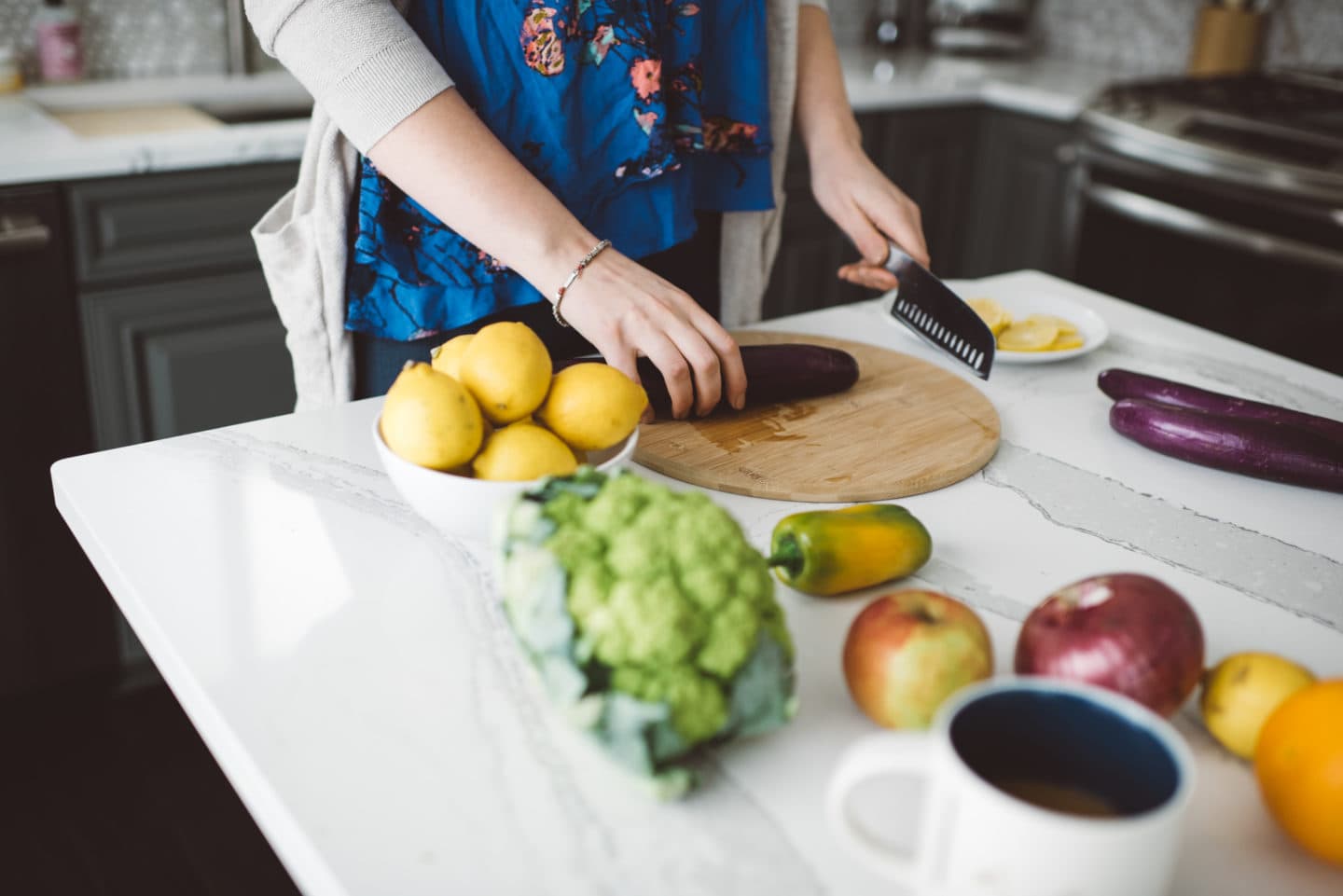
Digging into the research
Back then, I had super easy access to the University’s online library system, and could look up studies and articles on a whim with ease. I decided to research the one term I had heard someone use, in a completely different space. Something called Leaky Gut Syndrome, and I thought well hey… maybe I have that (I thought it described something else…).
Yup. I did the now popular, “lemme google that…” but was looking for studies that could unravel what was going on for me mentally. I searched and searched, and pretty soon I found one article, one that I wish I still had! It was a Swedish study on teenagers split into two groups. One group was fed a gluten-free diet, and the other fed a diet that contained gluten. Before starting the diets, the teens all completed an intake form assessing mental health markers and levels of emotional wellness, from depression to anxiety.
Can you guess what happened in the study? The teens who went gluten-free showed a marked decline in symptoms of mental distress! Woohoo.
As I was reading this, it clicked for me and I felt motivated to give a gluten-free diet a go. Taking out the gluten made sense to me pretty quickly, and as I was thinking, I realized that I had unintentionally been gluten-free when I was a younger teenager and my parents had put me on the Atkin’s diet–I remember feeling good (could I have been priming myself by reflecting back with rose-colored glasses? Totally.) on that Atkin’s diet as far as emotional health went. Cool.
And the rest is history! I went gluten-free, I was a lucky kid whose parents supported that decision, and while they may not have been privy to the multitude of emotional distress I was under because, yo, Minnesotan kids don’t talk about that stuff, they did know about the dermographism and were open to seeing if changes in what I was eating would affect symptoms of that, at the very least.
Within two weeks, the panic attacks stopped. I wasn’t even fretting about the potential of having a panic attack. Which was a big, big relief for me.
Within two weeks, homework was no big deal again. I felt the fog lift from my brain, and felt like I could spend an appropriate (for me) amount of time on homework again.
Within one month, the dermographism ended. I could kneel in the dirt again without my knees ballooning up. Not a great gardener but the option was there!
Why was gluten such a big deal?
Now that I’m older, now that it’s been a decade, I can reflect on why going gluten-free was especially useful for me during that time. I do wonder if that year is when the Hashimoto’s Thyroiditis I have started or was triggered, either by stress, or a comprised gut due to the multiple rounds of antibiotics I was given while living in and returning from Nicaragua in 2007, and if the panic and anxiety I was feeling were rooted in some hyperthyroid symptoms from the autoimmune attack. Thyroid tissue and gluten proteins have similar structures and, to our bodies, look similar. So if someone who is now primed in their bodies to attack thyroid tissue is getting an almost endless stream of similar looking proteins flowing through the body 3+ times a day (ahem, gluten with meals…), it can intensify the amount of antibodies the body feels it must send out.
My top five tips for managing general anxiousness via foods
Now that it’s been 10 years, I think there are some basic principles relating to how we can compose a plan to look at how the foods we may be consuming can affect our physiological stress (anxiousness around food, or fearing food, is a different subject).
This will be a series of different posts, because not only is anxiety just a huge subject, period, but it’s also so very individual!
In this post, we’ll be going over the top five focuses I encourage others (and myself) to look at when anxiousness is occurring on the regular and people have taken the care to stabilize the other pillars of support around anxiety as needed on an individual basis (physical movement, therapy, sound and caring relationships, recognizing the impact of past or current traumas, etc).
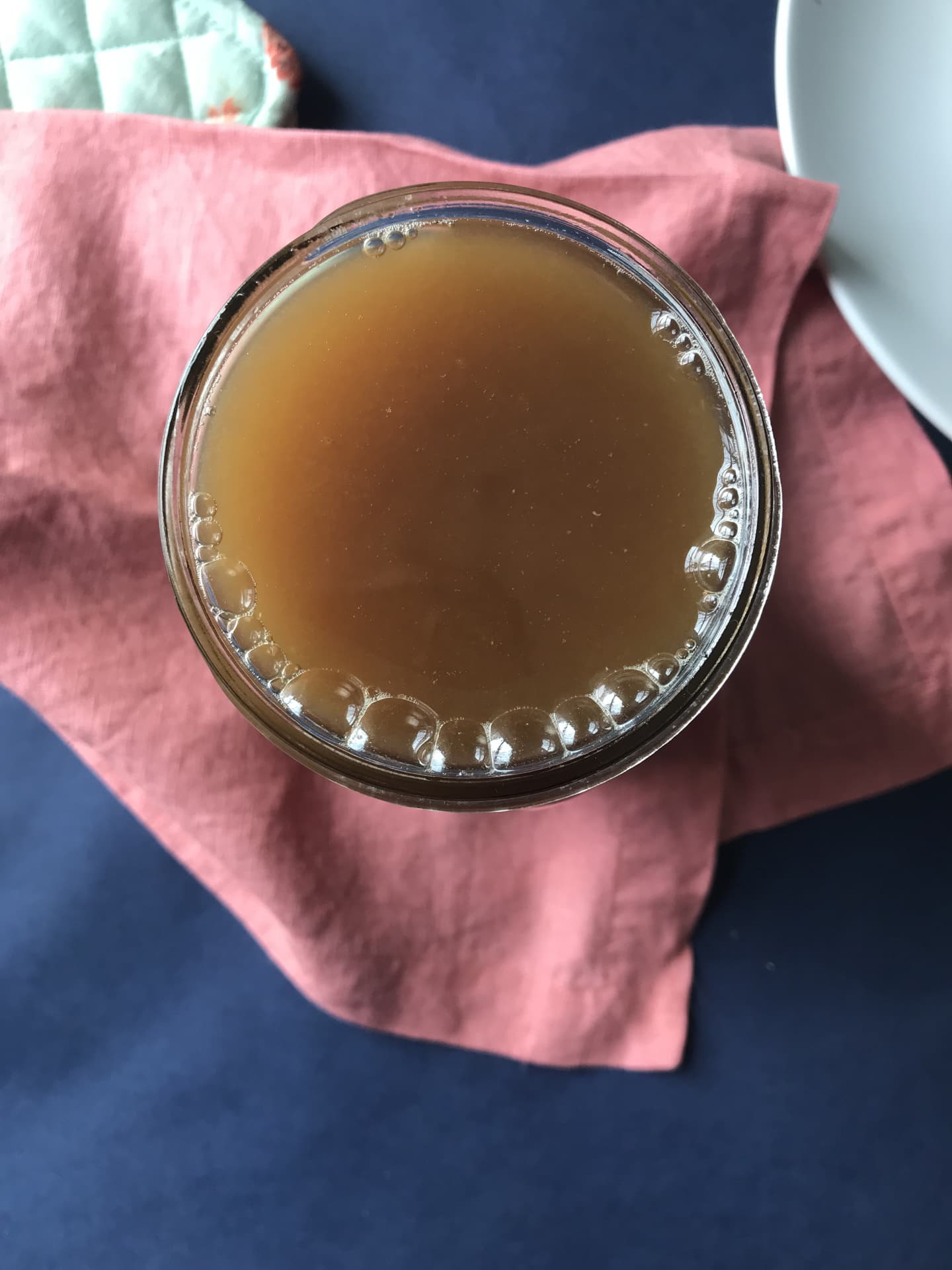
1. Exit the Blood Sugar Roller Coaster, Free of Charge
In general it seems like we understand that refined sugars aren’t really doing us too many favors from a nutrition standpoint. And in general, it seems like we know that refined sugars give us a big ol’ hit of energy when we eat them–and they are tasty, so we really, really enjoy eating them. And some of us even know when we’re feeling a bit “hypoglycemic”–when we feel like our blood sugar levels have plummeted (I am referencing people who do not have either Type 1 or Type 2 Diabetes). Yet with all of these considerations, I still don’t see a huge dialogue around figuring out how to opt off of the blood sugar rollercoaster. Because any of the above keep us on the blood sugar roller coaster. We eat a good ol’ dose of the stuff, we feel that blast of energy, or motivation, or maybe it’s a little… manic-feeling, that energy. Or actually, maybe we feel anxious as we feel that sugar rush, or maybe we feel like we need to burn that energy off but have to stay at our desks.
Additionally, where some of the even bigger anxious feelings can come from are the inevitable dips in blood sugar levels as we come to the end of our sugar highs. Because here’s the thing: refined sugars, stripped away from the natural foods they came packaged in, are still a pretty new introduction into our human lives–and for our human physiologies. We have fewer physiological resources to be able to handle that quick rise and quick fall in blood sugar levels due to this new stimulus.
So what can we DO? We hop off the ride.
We reduce our interactions with those sugary foods–something that the more standard North American style of eating doesn’t support. Think about some classic breakfast options:
- sweetened yogurts
- no food, but a coffee with skim milk and sugar
- no food until a morning snack
- grabbing a doughnut, granola bar or pastry on the way to the office or on the go
While we have no need to feel guilt, sadness or frustration when we choose these options, they are inherently an extremely easy way to spike our blood sugar levels as one of the first things we do during the day. Remember: when blood sugar levels spike up quickly, they’re going to drop down pretty quickly, too. So choosing foods that do not spike our blood sugar levels UP means that we also choose to disinclude those big blood sugar DROPS, too.
Cool!
What would be some more balanced breakfast options that don’t get us riding the blood sugar roller coaster immediately?
- Black Pudding with Spiced Apple Compote
- Cinnamon Vanilla Chia Seed Pudding
- Banana Pancakes
- Breakfast Sausage Patties
- Herbed Frittata
2. Disarm the Top 8 Allergenic Foods–For Now
This step is what made such a big impact on me 10 years ago, as I do not tolerate the proteins (gluten is an umbrella term for these) within wheat, and as I continue to eat gluten, it provokes additional inflammation in my system. While I now believe that during the spring and summer of 2008 is when I first started to experience Hashimoto’s symptoms, taking away the gluten is what put out the biggest fire, which freed me up to focus on the other parts of wellness that helped build me up, instead of always just trying to get by.
- Milk
- Eggs
- Fish
- Shellfish
- Tree Nuts
- Peanuts
- Wheat
- Soy
While so much of what we do here at Essential Omnivore is to provide choices and abundance–if anyone is feeling like they can’t figure out what’s going on in their systems, 95% of the time we work on at least cycling out time away from the top 8 allergenic foods. We do this to help suss out if any one of these common foods really are provoking symptoms for someone. The goal isn’t to make foods bad, but rather to elucidate “hey, right now, is this food working with me, or challenging me too much?” For many people, simply having a few weeks away from a certain food can illustrate if more care is needed in figuring out a) why this food may be difficult on the system (do we need increased digestive support? do we crave the food because we actually have a slight intolerance to it? do we need to increase happy gut bacteria so that by the time this food comes back in, we’re super ready to digest it?).
Elimination diets and challenge can get a bad rep, and they’re definitely not for everyone. At the very least, if someone is feeling like their anxiousness comes out of nowhere, comes and goes or is just always low-grade in the background, even beginning to journal which foods and beverages (amounts aren’t needed, if tracking food in this way is triggering) we’re exposing our systems to can help connect the dots.
Remember: when we can start to connect the dots–we can start to make a plan.
3. Make Minerals a Major Priority
Prone to charley horses? Always feel sore after any sort of physical activity? Feel like you hold your tension in your muscles? Tension headaches? Anxious as all get out? Not a big fan of vegetables or fruits, historically? Under duress from emotional stress, like financial, relationship or work situations that have turned into chronic stressors? Aha! Checking out mineral level status may be a nice option to soothe and calm our jitters.
Why minerals? Just like most vitamins, our bodies do not produce minerals, so this means… we gotta get them from outside of our bodies in order to then have them as usable building blocks! Minerals are especially important when we’re thinking about how our bodies function in relation to stress and anxiousness because minerals:
- Assist in proper nerve transmission
- Help muscles contract and RELAX (tight muscles from being stressed all the time? Yes, please go get a massage but also, can you muscles even functionally get the right signals to appropriately disengage when needed?)
- Assist in regulating blood pressure levels
- Help balance stomach acid levels
What is an easy way to get enough minerals in? Welp, I’ll tell ya. Those brightly hued vegetables grown in quality dirt, those local fruits that are just bursting with flavor… these are our solid go-tos when we think about eating enough minerals. We’ll cover supplementation in a later post.
It’s funny how the above also tie into tip #1–they’re great for balanced blood sugar levels at any time of the day!
4. Get Curious about Coffee, Chocolate & Tea
Which foods or drinks are coming in on the regular that may be stimulating an already likely overstimulated body system? Caffeine in coffee and tea, and theobromine in chocolate, can affect us more than we really may want to be the case. In addition, coffee, chocolate and tea are fermented products that sometimes, for those sensitive enough, may also provoke a minor allergic tension (re: inflammation) if yeast may be an issue for you.
While you’re starting the food journaling from tip #2, keep an awareness around coffee, tea and chocolate products, too. Notice how energy levels, anxiousness or worried thoughts may change.
5. Check in on Gut Bacteria
Due to being modern humans living in modern worlds, our gut bacterial load can be off, be too low, be too high in less than groovy bacteria, or simply be less than hospitable for really letting those good bacteria take hold and take up happy residence within our bellies.
With more and more evidence showing just how much the balance in our guts affects the balance in our brains, all of the first four steps and tricks listed above already influence our gut bacteria levels! Look at you, multi-tasking up a storm. So cool. Eating those colorful vegetables means we’re getting in the prebiotic fiber necessary to feed beneficial bacteria. Opting away from foods we may not tolerate well means we provide a leg up in our intestines to help reduce and soothe any inflammation. Getting in a proper array of minerals means we work to uphold proper nerve signalling, keeping the communication highway nice and clear between ye gut, and ye brain.
From a food perspective, fermented vegetables can go a long way to begin to introduce a range of different bacteria into our guts. Check out my whole page of recipes that show how easy it can be to create your own lacto-fermented recipes at home, or consider purchasing a jar or two of any natural brined, lacto-fermented vegetables at your closest natural grocer. Look for keywords like “probiotic”, “unpasteurized”, “contains beneficial bacteria and yeast” or “lacto-fermented” on the labels to help clue you into whether the product has been traditionally fermented (versus a sugar or vinegar brined option).
Ok! Those are the top 5 tips I have today. I hope this initial list has been useful and provides some background into starting places to think about if anxiousness feels more somatic, physical or like something has changed recently that surprises you in how you respond to stress. The next post I’ll dive more into supplements that can be used by some to be that kickstart towards more peaceful feelings, but like anything… double-checking foods that we consume is a lovely (and necessary) place to start.
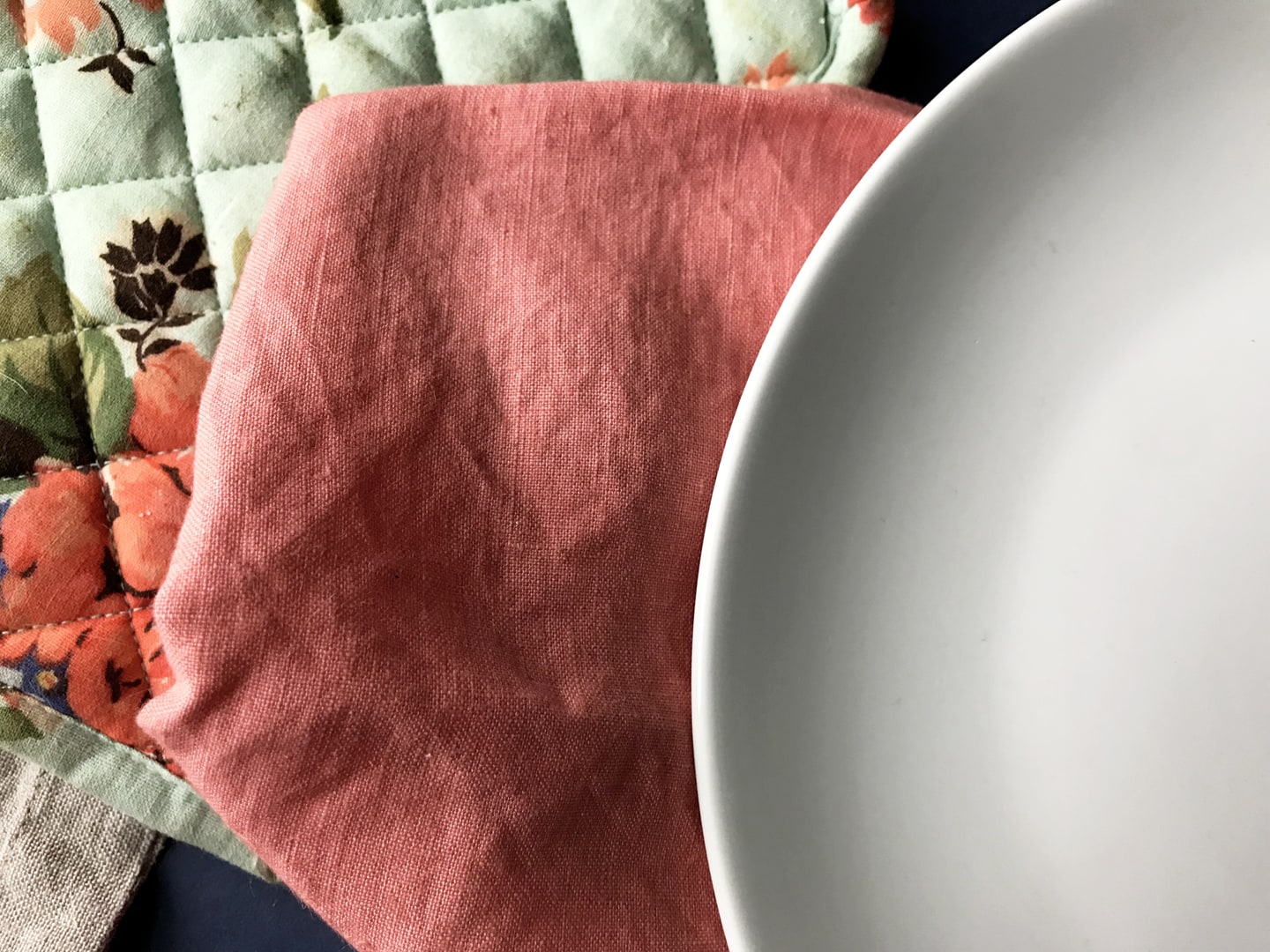
*Please understand that this dialogue is what occurs once someone has stability within basic human needs such as access to food, shelter and clothing–and that anxiety or panic that is being informed by past or current traumas is receiving licensed and medical help. I’m a big believer in therapy. Go to a therapist! Just like any other human, some may not be great, and so many are wonderful. This post is not intended to treat, diagnose or replace work with a licensed medical provider. Please do not construe it as such. Please read the full disclaimer here.

Comments